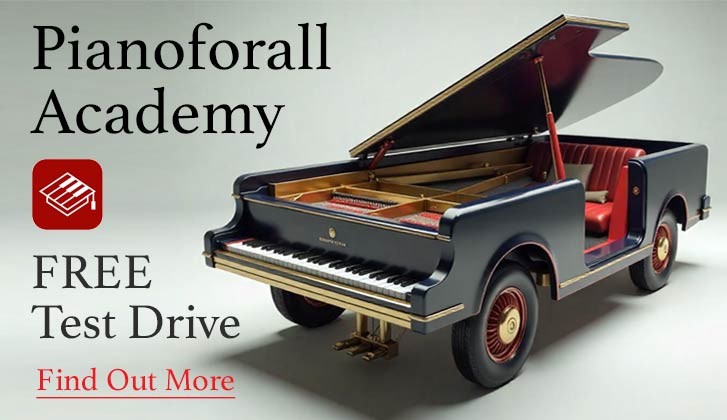If you can strum a guitar, you can play piano — and you might be closer than you think.
Picture this: an old Elvis Presley film. Elvis is singing a slow, soulful ballad to his leading lady. Off to the side, a guitarist is playing… nothing flashy. No solos, no frenzied picking. Just a gentle chord strum, steady and simple, holding the song together.
And it works. Nobody watching thinks, “That’s not real guitar playing.” We know instinctively it’s exactly what the song needs.
Piano can be the same.
You don’t have to play the melody. You don’t have to fill every space with scales or fancy runs. You can simply “strum” a chord on the piano — let it ring, let it support, and enjoy how effortless it feels.
Why Guitarists Learn Piano So Quickly
- You understand chords. Major, minor, sevenths… the shapes are different on piano, but the logic is the same.
- You know rhythm. Whether you strum or pick, you already have timing and groove in your muscle memory.
- You can hear progressions. Your ear is trained to recognise I–IV–V, minor six, and other classic movements.
That means your brain already has the “software” — you’re just swapping to a different “hardware” in the form of black and white keys instead of strings and frets.
The Myth of “Difficult” Piano
Most people picture piano as a marathon of finger gymnastics — hours of scales, sight-reading, and sheet music before you can even play a song. But that’s like saying you can’t play guitar unless you can sweep-pick like Yngwie Malmsteen.
The truth? You can play beautiful, satisfying music on piano with the same stripped-back approach you’d use on guitar. A handful of well-placed chords can carry an entire song.
Your First Steps from Guitar to Piano
- Learn the chord shapes for C, F, G, Am, and Dm on piano. (Yes — that’s all you need for hundreds of songs.)
- “Strum” with your right hand. Play the chord once per beat or every two beats, just like you’d lightly strum a guitar.
- Keep it simple. Resist the urge to overplay. Let the chords breathe.
You’ll be surprised how quickly you can accompany a singer — or yourself — without feeling like you’re “learning a whole new instrument from scratch.”
No keyboard yet? Check the beginner’s keyboard guide.
Why Bother Learning Piano at All?
- It’s easier to see music theory laid out visually.
- You can compose or arrange songs without worrying about fretboard patterns.
- It gives you a fuller range of notes for songwriting or recording.
If you already play guitar, piano is just another way to make the same music you love — only with a bigger, richer sound palette.
The Fastest Way for Guitarists to Learn Piano
If you play guitar and want to add piano to your skillset, you don’t need to start from scratch. Pianoforall teaches piano the way guitarists learn best — by ear, using chords from day one.
Instead of endless scales and theory, you’ll learn to “strum” piano chords, play patterns, and create full songs in weeks, not months. And because you already know how music works on guitar, you’ll pick it up even faster.
Try Pianoforall free — get free lessons, a free eBook, and free access to our Piano Lounge community. You’ll be amazed how quickly your guitar skills translate to the keys.
If you play guitar, you can play piano. And it’s a lot easier than you think.
Guitarist crossing over? Here’s the piano-from-chords beginner roadmap.
Check out this great video of ‘Hozier’ perfoming The Parting Glass. Notice how the pianist just ‘strums’ the chords. No fuss – just a perfect accompaniment to the gorgeous vocals. (And in Pianoforall this is one of the songs you will learn.)



